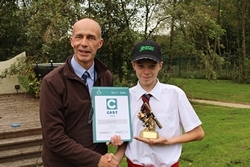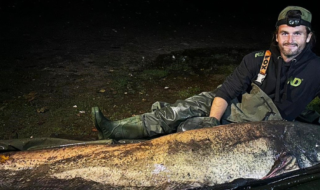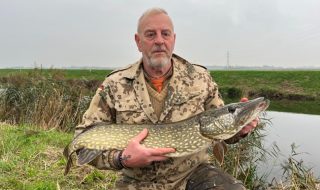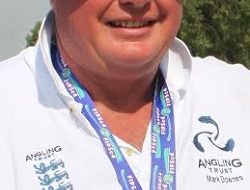The winning projects will receive cash from the second round of the Angling Improvement Fund, administered by the Angling Trust and funded with rod licence income from the Environment Agency.
When match funding and in-kind contributions are added, the total value of the funded projects amounts to nearly £135,000 – all of which will contribute to the delivery of the National Angling Strategy.
The winning bids included:
• £25,170 to five angling clubs and a fishing charity to provide coaching and improved facilities for junior fishing;
• £12,936 to four clubs and one council-run water park to help pay for fish refuges and floating reed beds that will protect fish from cormorants and other predators and enhance the environment of the lakes;
• £10,000 to enable two angling clubs to install otter-proof fencing.
With this funding, the children’s fishing projects are forecast to generate 2,700 new fishing experiences in the first year, a figure which is hoped will increase in the future. The otter-proof fencing and fish refuge projects aim to safeguard at least 2,000 fishing trips at venues which have been hit hard by unsustainable predation.
Launched in January, the Angling Improvement Fund has attracted unprecedented interest with 265 angling clubs, fisheries and other organisations across England submitting proposals over the two rounds. Due to the success of the scheme, plans are now being put in place for additional rounds and further details will be released this autumn.
Mark Lloyd, Chief Executive of the Angling Trust & Fish Legal, said: “Thank you to all the organisations that applied to the Angling Improvement Fund, many for a second time. The large number of applications clearly demonstrates the desire of anglers to protect valuable fish stocks and to bring fishing to a new generation.
“The Environment Agency and the Angling Trust hope to be able to repeat the fund in autumn 2015 if there is sufficient rod licence income available to pay for it. We appreciate how hard it can be for clubs and fisheries to finance projects and we will continue to give them expert advice to identify other funding opportunities, and to help them make the best possible applications.”
Sarah Chare, head of fisheries at the Environment Agency, said: “I am delighted that we have been able to put more rod licence income into the Angling Improvement Fund to benefit angling across England.
“This second phase will see 14 projects getting a share of the £50,000 made available. It’s great to see the variety of winners and I’m particularly pleased to see initiatives which encourage young people to give fishing a go.”
• Astwood Bank Angling Club, Worcestershire – repairs and replacement of fishing platforms at the club’s Bevington fishery to enable junior matches and training events to be held;
• Kingsbury Water Park – providing ‘floating islands’ at the Warwickshire complex which serve as refuges for fish from cormorants and other predators;
• Christchurch Angling Club – erection of an otter-proof fence;
• Earl of Harrington’s Angling Club, Derby – improvements to its Alvaston Park fishery including pre-planted reed beds and fish refuge cages;
• Potteries Angling Society – measures to improve fish stocks at Safari Lake in Stoke-on-Trent;
• Holme Brook Valley Park Angling Club, Chesterfield – providing floating reed beds and coaching for juniors;
• Abington Angling Club – measures to reverse the impact of fish-eating birds and crayfish at its Abington Park Lake fishery in Northampton;
• Hadleigh & District Angling Society – erection of otter-proof fencing at its fishery at Bullocky Fen, Layham, Suffolk;
• River Eden & District Fisheries Association – providing new maps to assist bird counts where cormorants and goosanders threaten fish stocks;
• South Cerney Angling Club – purpose-built coaching lake for young anglers at Cotswold Water Park;
• Smithills Angling Club, Bolton – equipment and coaching for juniors;
• Get Hooked On Fishing – to enable the charity to run four six-week angling programmes for juniors at Orton Pond, Peterborough;
• Ayton Angling Association – improvements to Larners Lake fishery to encourage scouts and schoolchildren in North Yorkshire to take up fishing;
• Gipping Valley Angling Club – improving access and safety at its Maypole Lake Fishery near Stowmarket to enable coaching of children and young adults.
For more details of the projects supported by the Angling Improvement Fund, please see the dedicated webpages at: www.anglingtrust.net/improvementfund
Organisations were invited to submit proposals for projects to increase children’s participation in angling or to protect fish stocks from predation. Applications were judged on the strength of arguments made for need and for future benefits, particularly in terms of ‘saved’ or new fishing visits to the venue. The judges also looked for evidence that the project could be successfully delivered and wanted to see a significant level of match financial funding and/or in-kind support.
National Angling Strategy:
The National Angling Strategy ‘Fishing For Life’ was launched in 2012 and reflects the concerns and ambitions of thousands of anglers and angling organisations in England. The Strategy sets out goals for maximising participation in angling, for improving lives through fishing, for creating and saving community waters and for protecting the health of fish populations and habitats. More information at www.anglingtrust.net/nationalanglingstrategy
Angling Trust:
Buy A Rod Licence Today
You can buy your rod licence online from the Post Office at www.postoffice.co.uk/rod-fishing-licence, at your local Post Office or by phoning 0344 800 5386.
Buying a rod licence online from the Post Office website is easy, and saves both time and administration costs, meaning that more of the income can be spent on improving fish stocks and fishing.






